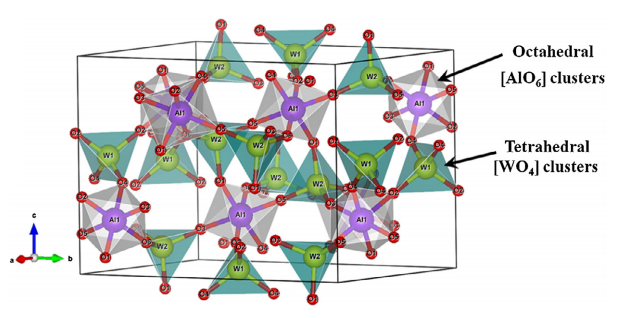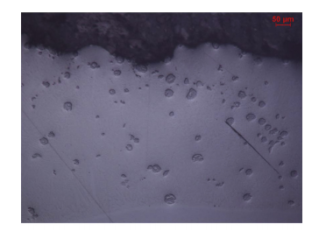
A joint experimental and theoretical study on the electronic structure and photoluminescence properties of Al-2(WO4)(3) powders
Abstract: In this paper, aluminum tungstate Al-2(WO4)(3) powders were synthesized using the co-precipitation method at room temperature and then submitted to heat treatment processes at different temperatures (100, 200, 400, 800, and 1000 degrees C) for 2 h. The structure and morphology of the powders were characterized by means of X-ray diffraction (XRD), Rietveld refinement data, and field emission scanning electron microscopy (FE-SEM) images. Their optical properties were examined with ultraviolet-visible (UV-vis) diffuse reflectance spectroscopy and photoluminescence (PL) measurements. XRD patterns and Rietveld refinement data showed that Al2(W04)3Al(2)(WO4)(3) powders heat treated at 1000 C for 2 h have a orthorhombic structure with a space group (Pnca) without the presence of deleterious phases. FE-SEM images revealed that these powders are formed by the aggregation of several nanoparticles leading to the growth of microparticles with irregular morphologies and an agglomerated nature. UV-vis spectra indicated that optical band gap energy increased from 3.16 to 3.48 eV) as the processing temperature rose, which was in turn associated with a reduction in intermediary energy levels. First-principle calculations were
Author(s): Batista, FMC; La Porta, FA; Gracia, L; Cerdeiras, E; Mestres, L; Li, MS; Batista, NC; Andres, J; Longo, E; Cavalcante, LS
JOURNAL OF MOLECULAR STRUCTURE
Volume: 1081 Pages: 381-388 Published: FEB 5 2015
DOI: 10.1016/j.molstruc.2014.10.016




